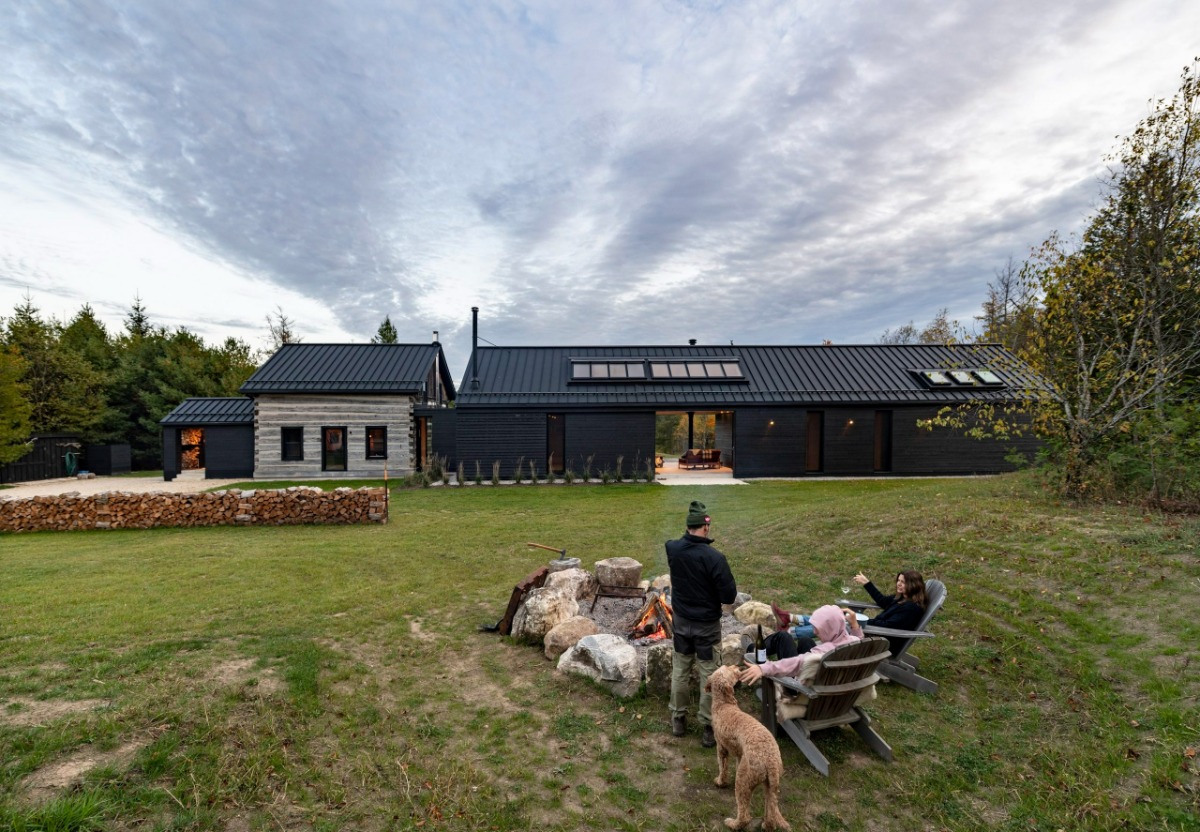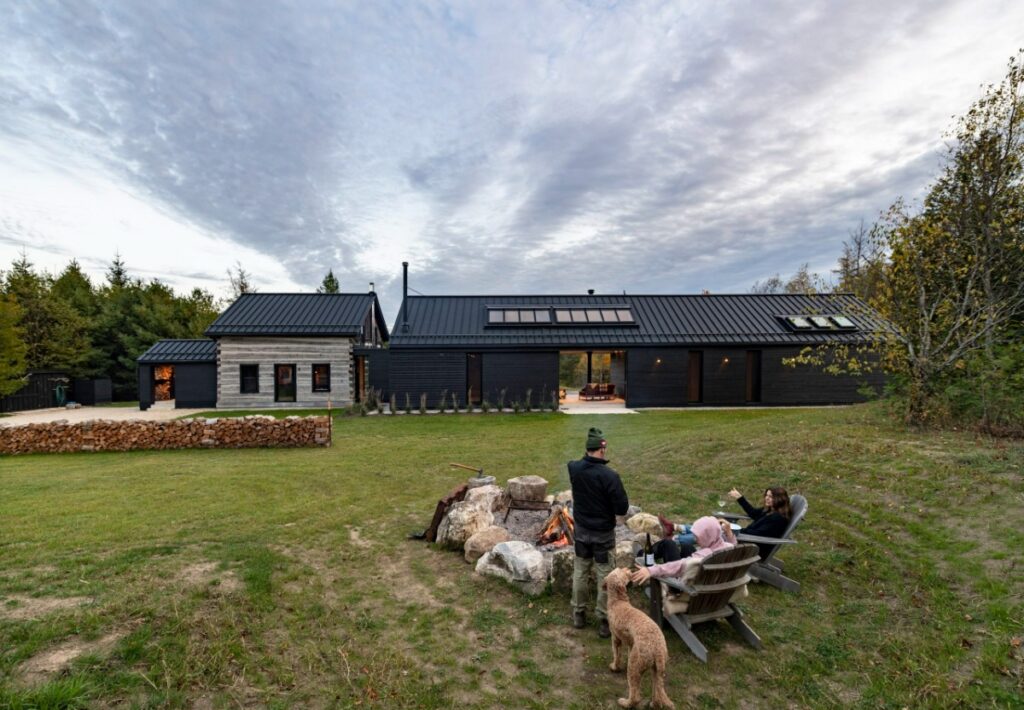
Working with the Landscape in Cottage Design
Even the most casual real estate watchers will have noticed the increased enthusiasm for vacation property. With some travel restrictions in place, and an increased emphasis being placed on health and wellness, the demand for cottages, cabins, farmhouses and recreation property has skyrocketed. Certainly, regular access to a country home can play a significant role in maintaining our physical and emotional health. In a rural setting, we can escape the often-hectic pace of urban life to relax and connect with nature, family, hobbies, or even a good book. Though the natural environment is central to any northern experience, equal attention should be paid to the dwelling and how it interacts with the landscape.
If you are planning to build or renovate a dream getaway, there are some key principles to consider so that your property realizes its full potential. These include: capturing dramatic views of the landscape to fully experience both the settings and the seasons; maximizing natural light and ventilation through the use of large, operable windows and skylights; integrating interior and exterior spaces; specifying a material palette that reflects the natural qualities of the site; and implementing a sustainability strategy to ensure the building treads lightly on the earth.
To offer inspiration and context, here are three 4-season retreats designed by Toronto-based architectural firm superkül that make full use of these guiding principles.
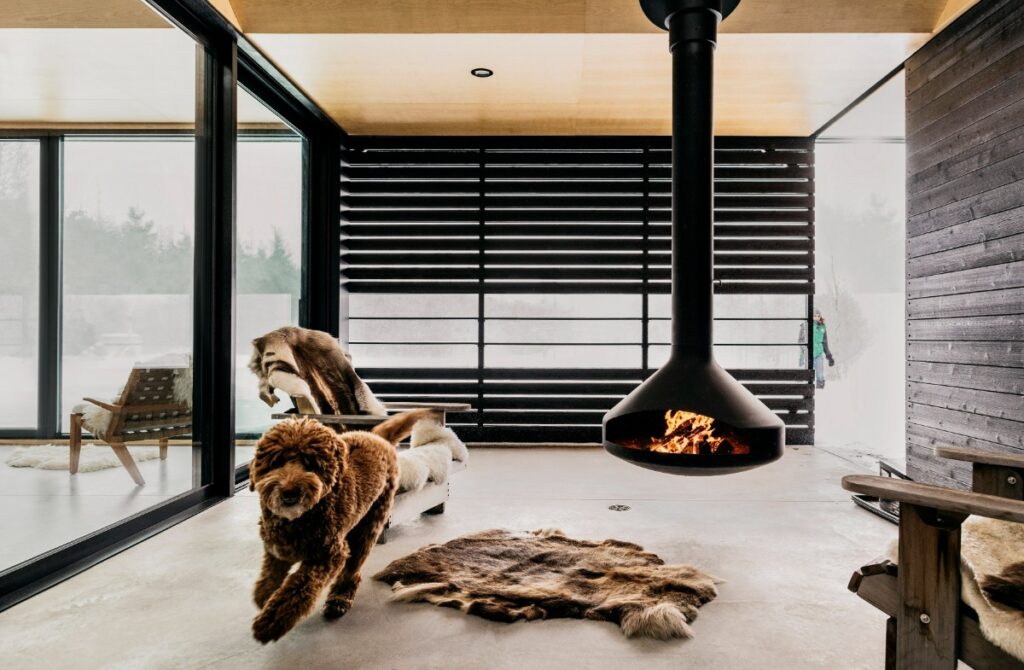
Woodhouse
Location: Singhampton, Ontario
Size: 1,150 sf existing cottage + 1,660 sf renovation
This striking rural country house was designed for a couple and their two children near Creemore, Ontario in the Municipality of Grey Highlands. Comprised of an existing 19th-century log cabin and a modern addition, the house is sited within a large clearing on a heavily wooded 90-acre site.
Retention of the historic, rustic qualities of the existing building was paramount; it remains distinct and separate, yet connected to the new addition by a glazed link. The two building forms are unified into a cohesive whole through the material expression of exterior cladding materials: riffing on the rough-hewn logs of the old cabin, charred wood siding is a modern interpretation that ensures visual and textural continuity. Similarly, a low gable roof was chosen for the new addition to reference the existing cabin as an integral compositional element of the scheme. Tilt-and-turn windows with a black aluminum exterior finish create a seamlessly defined exterior envelope.
An exterior breezeway divides the kitchen and dining area from the privacy of the sleeping quarters – a key aspect of the design that allows the clients to fully experience the seasons and the natural elements all year long. Sixteen-foot-long wood panels are hung from the soffit and can slide across the length of the façade to fully enclose the breezeway, thus offering protection from even the harshest winter winds. When these sliding doors are closed, a vaulted ceiling featuring a bank of four north-facing skylights opens up the space, refocusing attention from the horizontal plane of landscape beyond to the sky above. A suspended fireplace is a focal point of the space…a literal hearth around which the family can gather.
The house reflects the affable and lively spirit of the clients, embodied in the warm, textured material palette and diversity of spatial conditions. Most importantly, to facilitate their insistence on an ever-present connection to the landscape, the architectural strategy prioritizes the seamless flow of interior and exterior spaces with as few visual, physical and mechanical barriers to the experience of the home and property.
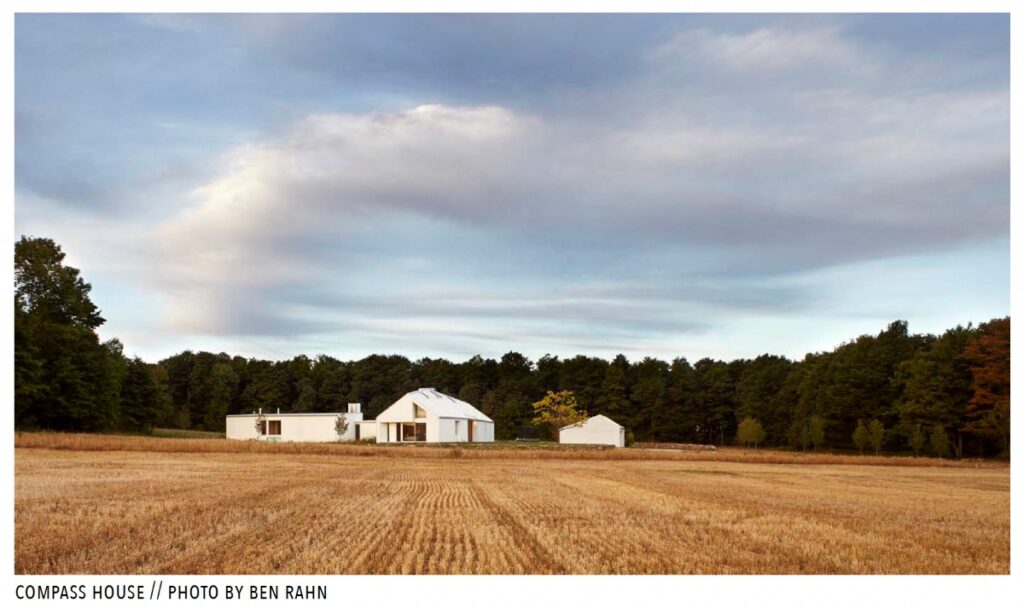
Compass House
Location: Mulmur, Ontario
Size: 3,515 sf
Located on the Niagara Escarpment, this weekendhome for a family of six transcends ordinary domestic programming to create a place of spiritual resonance. Through its siting, tectonics and materiality, it balances intimacy and expansiveness, light and dark, land and sky — orienting and heightening one’s experience of the surrounding environment.
With forests to the west, a hill to the south, and 100 acres of fields to the north and east, Compass House is surrounded by a thicket of trees to provide windbreak and a sense of enclosure. Its white exterior registers the seasons, distinct amidst the green fields of summer, and melding into a winter landscape of waning light and snow.
Constructed with fieldstone found on the property, low retaining walls create a plinth for the house and ground it in the land. Two perpendicular wings enclose an intimately scaled outdoor courtyard. In response to the building’s low-lying horizontality, the totemic form of the outdoor fireplace adds a critical vertical counterpoint, as do the judiciously placed skylights in the soaring pitched roof planes of the house, which allow soft washes of light to illuminate the interior.
Inspired by the historical precedent of the longhouse, all rooms and spaces enjoy pronounced natural light and ventilation. A generously scaled, yet intimate family space, including kitchen, dining and living areas, forms the central hub, with bedrooms comfortably separated on either end. Floors and walls made from white oak and knotty white cedar are textured and warm. In contrast, the ceiling above the main space is white, expansive and seemingly boundless. The distinct difference in materiality echoes the meeting of land and sky outside.
On the exterior, the firm’s commitment to architecture that endures is manifest in the use of low-maintenance construction materials such as cement-board siding, aluminum windows and a steel roof. Phase One of the project is LEED Gold-certified, and this commitment to sustainability carries into Phase Two with a design that prioritizes natural daylighting, passive ventilation, high insulation values and construction waste reduction. The provision of an in-ground geothermal system furthers the goal of what is already exceptional energy performance.
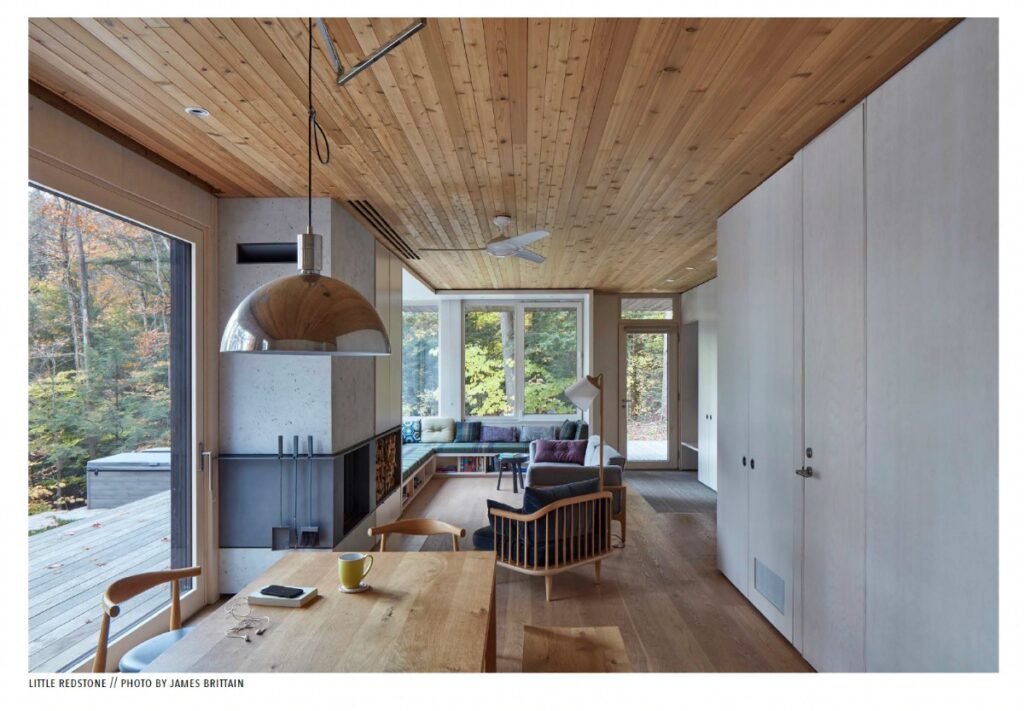
Little Redstone
Location: Haliburton Highlands, Ontario
Size: 1,623 sf
Located on a quiet lake in Ontario’s Haliburton Highlands, this modest family cottage seeks to integrate directly with its natural surroundings to offer a sylvan refuge at the water’s edge. The home sits at the base of a steep hill that cascades down toward Little Redstone Lake, secreted away from view, while featuring generous vantage points out onto the water. Clad in lightly burned and brushed cypress, the charred hue camouflages the cottage and establishes it as part of the forested landscape, letting the site’s natural features and native trees remain foregrounded and primary.
While the exterior blends with the terrain, the interiors consist of white-washed birch plywood, providing a serene counterpoint that evokes a deep sense of tranquility. The house is awash in natural light, bringing the interior experience into harmony with the rhythms and moods of the outdoors. Glazing along the main floor offers full vistas of the lake and beyond, interrupted only by a concrete and blackened steel fireplace. The hearth proposes a demarcation between living and dining areas in the otherwise open space, and is adjacent to a full kitchen outfitted with ample storage.
This four-season cottage boasts enough space to sleep 10 comfortably — a priority for the clients who share this space with family members and friends — and was designed to meet high energy-efficiency standards, ensuring comfort throughout the year. In-floor radiant heat provides a cozy warmth during the colder months, while ductwork circulates hot air from the wood-burning fireplace more widelythroughout the house. The strategic placement of operable windows along the double-height staircase is intended to encourage passive ventilation as temperatures rise in the spring and summer.
At the edge of the lake, just beyond the trees that sit between the cottage and the water, a small pavilion sits perched above the stones along the shore. Two walls of glass open at a columnless corner to expand the space, providing the perfect place to enjoy a glass of wine while taking in a summer sunset.
____________
superkül is a Toronto-based architecture firm established in 2002. In creating buildings of true and lasting value, the team is anchored in the belief that great design is a process, not a preconceived idea. For more information, visit www.superkul.ca

